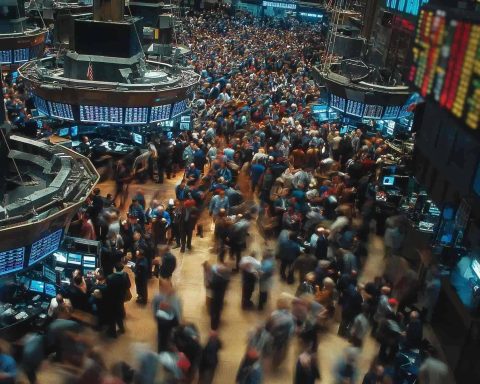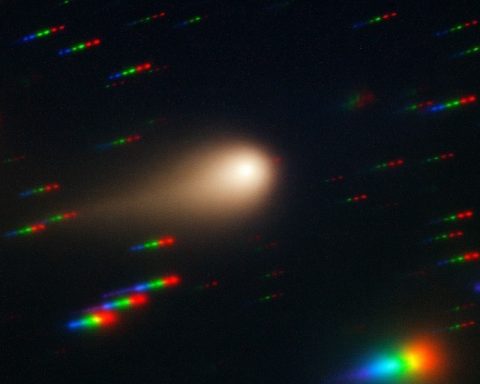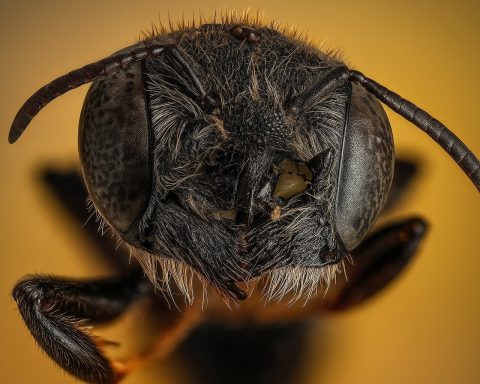- On sol 4,608 in Gale Crater, Curiosity spotted a 5-cm wind-eroded rock nicknamed Paposo resembling coral.
- A NASA-led study published in the International Journal of Astrobiology suggests Titan’s methane/ethane lakes could assemble amphiphile membranes into bilayer vesicles, forming protocells without water.
- A global study of 700 rivers finds about 60% of river CO2 outgassing comes from old carbon stores hundreds to millions of years old.
- By 2080, rising seas could regularly flood Ahu Tongariki and up to 51 other Moai sites on Easter Island, per University of Hawaiʻi researchers.
- Janjucetus dullardi, a 2-meter-long, sharp-toothed mammalodontid whale, lived about 26 million years ago on Victoria’s surf coast, and its skull (published Aug 12 in Zoological Journal of the Linnean Society) preserves ear bones revealing early whale hearing.
- In dementia-prone mice, researchers used mitoDREADD-Gs to boost neuronal mitochondria and reversed memory loss, establishing a direct cause-and-effect link between mitochondrial dysfunction and cognitive symptoms.
- AI screening of 233 archaeal species identified over 12,000 candidate antimicrobial molecules, dubbed archaeasins, with 80 synthesized and 93% active against at least one drug-resistant bacterium.
- Tridymite, a silica mineral from a 1724 German meteorite, behaves as a crystal-glass hybrid with nearly temperature-constant heat conduction from 80 K to 380 K, as reported in PNAS.
- The Dragonfly mission will not specifically search for vesicles on Titan, but vesicle-based life precursors could influence how future missions seek signs of life there.
- The August 13–14, 2025 roundup spans discoveries from Mars to AI-driven antibiotics, Earth’s carbon cycle, oceanic fossils, and thermal materials, citing studies from Nature, Science, PNAS, and NASA.
Space & Astronomy – Curiosity Rover Finds ‘Coral’ on Mars
NASA’s Curiosity Mars rover has captured images of bizarre, coral-like rocks on the Red Planet, offering a glimpse of Mars’s watery past [1] [2]. On its 4,608th Martian day (sol) in Gale Crater, Curiosity’s camera spotted a 5-cm feature nicknamed “Paposo” – a wind-eroded rock that strikingly resembles a piece of coral [3]. According to the mission team, such delicate formations likely formed billions of years ago when liquid water percolated through cracks, depositing minerals that later hardened [4]. Eons of sandblasting winds then wore away the surrounding material, “producing unique shapes” like this coral-like structure [5]. The finding adds to the growing evidence that Gale Crater once held liquid water – and perhaps even habitable conditions – in Mars’s ancient past.
Space & Astrobiology – Titan’s Lakes Could Form Life’s Building Blocks
In a NASA-led study, scientists propose that Saturn’s moon Titan might naturally produce cell-like compartments – vesicles – in its methane-rich lakes [6] [7]. Titan is the only world besides Earth with stable liquid on the surface, though its lakes are filled with liquid hydrocarbons (methane/ethane) instead of water [8]. Researchers modeled how amphiphile molecules (which have water-loving and water-fearing ends) could assemble into bilayer membranes in Titan’s frigid lakes [9] [10]. This process could create primitive “protocell” structures even without water. The study, published in International Journal of Astrobiology, hints at a new pathway for life’s precursors on alien worlds [11]. “The existence of any vesicles on Titan would demonstrate an increase in order and complexity, which are conditions necessary for the origin of life,” explains Dr. Conor Nixon of NASA Goddard Space Flight Center [12]. While NASA’s upcoming Dragonfly mission will not specifically hunt for vesicles, these ideas could change how we search for life on Titan in the future [13].
Climate Science – Ancient Carbon ‘Leaks’ from Earth’s Rivers
A groundbreaking global study has revealed that ancient carbon, long locked away in rocks and soil, is now “leaking” into the atmosphere via rivers [14] [15]. By radiocarbon-dating CO₂ outgassing from over 700 rivers worldwide, scientists found that about 60% of river-emitted carbon dioxide comes from carbon stores hundreds to millions of years old – far more than previously thought [16]. This suggests that carbon once considered securely buried is re-entering the carbon cycle. Lead author Dr. Josh Dean of the University of Bristol said “The results took us by surprise because it turns out that old carbon stores are leaking out much more … than previous estimates suggested. The implications are potentially huge for our understanding of global carbon emissions” [17]. Published as a cover story in Nature, the study implies that plants and soils may be compensating by absorbing an extra gigaton of CO₂ annually [18]. This discovery calls for a rethink of the global carbon cycle, since even “stable” carbon reservoirs in landscapes aren’t as permanent as once believed.
Environmental Science – Rising Seas Threaten Easter Island’s Sacred Statues
Climate change is putting cultural heritage at risk: a new study warns that by 2080, waves driven by rising seas could regularly flood the iconic Moai statues of Rapa Nui (Easter Island) [19]. Using advanced computer models, University of Hawaiʻi scientists project that the ceremonial site Ahu Tongariki – home to some of the island’s largest moai – and up to 51 other cultural sites face periodic inundation as sea levels climb [20] [21]. “This research reveals a critical threat to the living culture and livelihood of Rapa Nui,” says lead author Noah Paoa, a Rapa Nui native and UH Mānoa researcher [22]. “For the community, these sites are an essential part of reaffirming identity … They are the backbone of the island’s tourism industry. Failure to address this threat could ultimately endanger the island’s UNESCO World Heritage site status.” [23] The findings, published in the Journal of Cultural Heritage, urge both engineering measures and community-driven plans to protect irreplaceable sites from the encroaching ocean [24] [25]. It’s not a question of if these sacred places will be impacted, Paoa emphasizes, but how soon – mirroring challenges faced by coastal heritage sites worldwide.
Biology & Evolution – Fossil of Tiny ‘Killer’ Whale Unearthed in Australia
Paleontologists in Australia have discovered an extraordinary fossil of a sharp-toothed, dolphin-sized whale that lived 26 million years ago [26] [27]. The new species, named Janjucetus dullardi, is an early cousin of today’s filter-feeding baleen whales – but it couldn’t be more different from modern gentle giants. With forward-facing eyes, a short snout, and “a mouth full of sharp, slicing teeth,” Janjucetus was a formidable predator despite being only about 2 meters long [28] [29]. “It’s essentially a little whale with big eyes and a mouth full of sharp, slicing teeth… imagine the shark-like version of a baleen whale – small and deceptively cute, but definitely not harmless,” said lead author Ruairidh Duncan of Museums Victoria [30]. The fossil skull, discovered by a local beachcomber on Victoria’s surf coast and donated to science, is remarkably well-preserved – including ear bones that provide unprecedented insights into early whale hearing, feeding, and behavior [31] [32]. Janjucetus belongs to the mammalodontids, a rare lineage of Oligocene whales; it’s only the fourth such species known worldwide [33]. The find, published August 12 in Zoological Journal of the Linnean Society, “unlocked an entire chapter of whale evolution we’ve never seen before,” according to Dr. Erich Fitzgerald, senior curator at Museums Victoria [34] [35]. It also sheds light on how ancient whales adapted to warm, shallow seas – offering clues to how marine life might respond as oceans warm again today.
Medicine & Health – Restoring Memory by Powering the Brain’s ‘Batteries’
In a promising medical breakthrough, scientists have reversed memory loss in mouse models of neurodegenerative disease by jump-starting the brain’s cellular “batteries” – the mitochondria [36] [37]. A study published in Nature Neuroscience established for the first time a direct cause-and-effect link between malfunctioning mitochondria and the cognitive symptoms of disorders like Alzheimer’s [38]. Researchers from Inserm (France) and University of Bordeaux created a novel experimental tool (a engineered receptor called mitoDREADD-Gs) to boost mitochondrial activity specifically in the neurons of dementia-prone mice [39] [40]. The result: previously forgetful mice regained normal memory function [41]. “This work is the first to establish a cause-and-effect link between mitochondrial dysfunction and symptoms related to neurodegenerative diseases,” explained Dr. Giovanni Marsicano, the study’s co-senior author [42]. It suggests that “impaired mitochondrial activity could be at the origin of the onset of neuronal degeneration” [43]. By effectively powering up the brain’s energy factories, the team was able to halt memory decline – a result that opens the door to potential new treatments targeting mitochondria. While these findings in animals are preliminary, they point to mitochondria as a promising therapeutic target to slow or prevent diseases like Alzheimer’s [44]. The researchers are now exploring whether continuous mitochondrial stimulation can delay neuron death or even prevent degeneration altogether – a hopeful avenue for future dementia therapies [45].
Artificial Intelligence & Biotech – AI Discovers New Antibiotics in Ancient Microbes
Harnessing artificial intelligence, scientists have unlocked a trove of potential new antibiotics hidden in one of Earth’s most extreme domains of life: the Archaea. In a study from the University of Pennsylvania published in Nature Microbiology on August 12, researchers applied deep-learning algorithms to scan the proteomes of 233 archaeal species, uncovering over 12,000 candidate molecules with predicted antimicrobial activity [46] [47]. These primitive microbes (a domain distinct from bacteria) often survive in boiling springs, deep-sea vents, and other harsh environments – and their proteins appear to hold chemical tricks for killing other germs. The team synthesized 80 of the AI-flagged molecules (dubbed “archaeasins”), and remarkably 93% of them showed activity against at least one drug-resistant bacterium in lab tests [48] [49]. Intriguingly, these archaeasins seem to attack pathogens in a novel way: instead of punching holes in bacterial membranes like many existing antibiotics, they “pull the plug from the inside,” disrupting the electrical signals bacteria need to survive [50] [51]. “Trying to find new antibiotics one molecule at a time is like looking for needles in a haystack,” notes Dr. Fangping Wan, a researcher on the team. “AI speeds up the process by identifying where the needles are likely to be.” [52] Using an AI tool called APEX, the scientists pinpointed these promising sequences and even demonstrated in mice that several archaeasin compounds can halt deadly infections [53]. “This research shows that there are potentially many antibiotics waiting to be discovered in Archaea… With more and more bacteria developing resistance to existing antibiotics, it’s critical to find new antibiotics in unconventional places,” says Dr. César de la Fuente, the study’s senior author [54]. As “superbugs” continue to rise, AI-powered exploration of life’s most ancient and extreme branch may deliver desperately needed drugs from unexpected places.
Physics & Technology – Meteorite Mineral Defies the Rules of Heat
An “alien” mineral from a 300-year-old meteorite is reshaping what we know about heat conduction in materials [55] [56]. Researchers led by Columbia University predicted – and then experimentally confirmed – a form of silica called tridymite that behaves as a hybrid of crystal and glass. Uniquely, this mineral’s ability to conduct heat stays nearly constant across a wide temperature range (from 80 K up to 380 K) instead of increasing or decreasing with temperature as normal materials do [57] [58]. Such thermal constancy breaks the conventional rules of heat flow: ordinarily, crystals conduct less heat when hot, while glasses conduct more [59] [60]. The tridymite sample, originally part of a meteorite that fell in 1724 in Germany, has an atomic structure in-between an orderly crystal and a disordered glass – explaining its bizarre thermal behavior [61] [62]. This discovery, published in PNAS, is exciting physicists because it opens the door to engineered materials that can handle extreme temperature swings without warping or failing. In practical terms, a material that doesn’t expand or lose strength with temperature could revolutionize industries from electronics to aerospace. Notably, the team found that prolonged high-temperature treatment can induce this crystal–glass phase in industrial ceramics: for example, steel furnace bricks could be imbued with tridymite-like structures to better withstand heat, potentially improving efficiency and cutting emissions in steel manufacturing [63]. Scientists hailed the result as a marriage of AI-driven theory and real-world experiment – a cosmic insight that might help solve down-to-earth problems like waste-heat recovery and thermal protection [64] [65].
Sources: Major science news reported on August 13–14, 2025. References include peer-reviewed studies and releases in Nature, Science, PNAS, NASA announcements, and reputable science media outlets such as ScienceDaily, SciTechDaily, Sci.News, and Phys.org [66] [67] [68] [69]. Each citation corresponds to the original source or study for further reading.
References
1. www.sci.news, 2. www.sci.news, 3. www.sci.news, 4. www.sci.news, 5. www.sci.news, 6. scitechdaily.com, 7. scitechdaily.com, 8. scitechdaily.com, 9. scitechdaily.com, 10. scitechdaily.com, 11. scitechdaily.com, 12. scitechdaily.com, 13. scitechdaily.com, 14. scitechdaily.com, 15. scitechdaily.com, 16. scitechdaily.com, 17. scitechdaily.com, 18. scitechdaily.com, 19. www.sciencedaily.com, 20. www.sciencedaily.com, 21. www.sciencedaily.com, 22. www.sciencedaily.com, 23. www.sciencedaily.com, 24. www.sciencedaily.com, 25. www.sciencedaily.com, 26. www.sciencedaily.com, 27. www.sciencedaily.com, 28. www.sciencedaily.com, 29. www.sciencedaily.com, 30. www.sciencedaily.com, 31. www.sciencedaily.com, 32. www.sciencedaily.com, 33. www.sciencedaily.com, 34. www.sciencedaily.com, 35. www.sciencedaily.com, 36. ts2.tech, 37. ts2.tech, 38. ts2.tech, 39. www.sciencedaily.com, 40. www.sciencedaily.com, 41. ts2.tech, 42. ts2.tech, 43. ts2.tech, 44. ts2.tech, 45. ts2.tech, 46. www.sci.news, 47. www.sci.news, 48. www.sci.news, 49. www.sci.news, 50. www.sci.news, 51. www.sci.news, 52. www.sci.news, 53. www.sci.news, 54. www.sci.news, 55. www.sciencedaily.com, 56. www.sciencedaily.com, 57. www.sciencedaily.com, 58. www.sciencedaily.com, 59. www.sciencedaily.com, 60. www.sciencedaily.com, 61. www.sciencedaily.com, 62. www.sciencedaily.com, 63. www.sciencedaily.com, 64. www.sciencedaily.com, 65. www.sciencedaily.com, 66. scitechdaily.com, 67. www.sciencedaily.com, 68. www.sciencedaily.com, 69. www.sciencedaily.com










